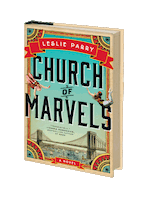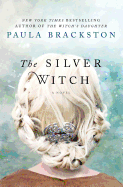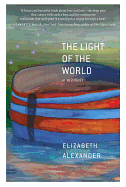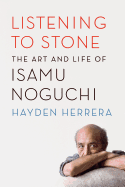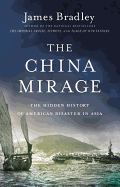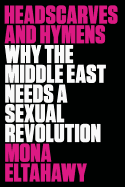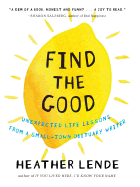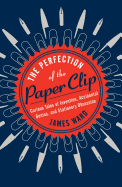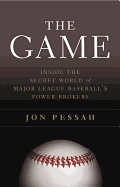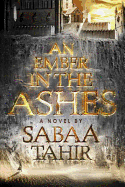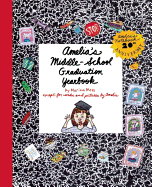 |
| photo: Adam Farabee |
Leslie Parry is a graduate of the Iowa Writers' Workshop. Her stories have appeared in the Virginia Quarterly Review, Missouri Review, Cincinnati Review, and the PEN/O. Henry Prize Stories, among other publications. She was recently a resident at Yaddo and the Kerouac House. Her writing has also received a National Magazine Award nomination and an honorable mention in The Best American Short Stories. She lives in Chicago.
Church of Marvels inhabits a very compelling and specific setting that combines fantasy and history. How did you choose this time and place?
I didn't consciously set out to write a book about New York, but the sensory experience of living there (the space, the light, the sounds and smells) remains very vivid in my mind, years after I moved away. Like many Americans, the city was a portal for my family. My great-grandfather, who was born in 1888, grew up in an immigrant family in Greenwich Village. His own father was a dreamy, dissolute, would-be poet who operated an elevator; his mother and sister worked as dressmakers. He fell in love with my great-grandmother, an actress, when he saw her on the stage. It's a story that's always fascinated me, but because he died so young, it's all that I really know of him. So at the root of this book, perhaps, is the desire to re-create the world that he lived in, to imagine a history of the Parrys in America. But the story, of course, became something else entirely. And once I started following these specific characters through the streets of Manhattan, the book took on a life of its own.
How much research did you have to do into this historical setting, and what did that process look like?
Before I even knew this was going to be a novel, I was reading certain books just out of curiosity--New York history, medical history, labor history; various histories of vaudeville, dime museums, prizefighting, theater. I even read a book on the history of garbage. So I'm sure all of those various threads were humming along in my mind, crossing and sparking, when I sat down to write. Then, when I was deep into the drafting process, I went back and did some more focused reading: on hair weaving, river transportation, the opium trade, etc. I loved doing research: it answered questions I didn't even know I had, and helped me understand the hurdles these characters would have been up against. But at the same time--since this is a work of fiction--I didn't feel beholden to a strict factual representation. I let the research inform the story, but not determine it.
You tell a number of different stories that eventually converge into one. Was it hard to keep track?
Yes! And more so at first, when the story was still taking shape. I knew the direction I was traveling--I knew, in a loose way, how I wanted the plot to evolve--but I didn't always have a clear path. I took a lot of wrong turns and hit a few dead ends. But I was guided by the overall sensibility of the story; I had to trust the characters. And I was fortunate enough to have a terrific editor help me across the finish line.
Did you always intend to write them as distinct stories?
Yes. In fact, the very first pages of this novel were not novelistic at all. I began writing vignettes about people who populated different areas of the city--just character sketches, really. It was almost like an actorly exercise, trying to situate myself in another body, in another world. This came about after spending some time in New York, where a few chance encounters happened to dovetail serendipitously. I caught a sideshow act at Coney Island; I read Nellie Bly's Ten Days in a Mad-House; I spent days traversing downtown Manhattan with my sister (usually on the hunt for gelato, mussels, pickles, dumplings). I stumbled across the word night-soiler, I think during a visit to the Tenement Museum. But I got frustrated with these vignettes after a while, unsure where they were headed. I put the pages away for a few years, but I kept thinking back on them. One day I read everything through again and saw the whole project differently--it was a novel, and soon the threads began to braid together.
What do you think makes for good or memorable characters?
That's a good question. I'm drawn to characters who make mistakes. (This is different from having an endearing flaw--being beautiful but clumsy, say, or handsome but moody.) Mistakes--whether they're decisions made impulsively, or are calculated; whether they happen in spite of a character's better judgment, or begin as acts of good faith, naiveté--they reveal some of the most complicated aspects of human behavior. Confusion and doubt, shame or regret, thwarted desire, yearning, fury, vulnerability, perhaps a barbed pathway to amends--it's a universal experience, and yet has infinite variations.
Do you have a favorite character?
Whichever character I was writing about at the moment became my favorite (even when they tried me and exasperated me!). But there is a special place in my heart for Alphie. --Julia Jenkins
Leslie Parry: Trusting the Characters
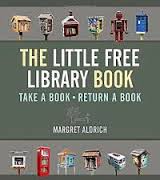 In The Little Free Library Book (Coffee House Press, $25), Margret Aldrich spoke with 70 LFL "stewards," from Uganda to Ukraine to the Los Angeles Police Department. She asked them why they built their LFLs, what makes them special, what are the weirdest books to show up. She proffers advice on getting started; ordering a LFL or building your own; launching a library, from chalking a sidewalk to a press release; curating a selection (the mixture will take on a life of its own, but it can be stocked for an occasion, like Black History Month).
In The Little Free Library Book (Coffee House Press, $25), Margret Aldrich spoke with 70 LFL "stewards," from Uganda to Ukraine to the Los Angeles Police Department. She asked them why they built their LFLs, what makes them special, what are the weirdest books to show up. She proffers advice on getting started; ordering a LFL or building your own; launching a library, from chalking a sidewalk to a press release; curating a selection (the mixture will take on a life of its own, but it can be stocked for an occasion, like Black History Month).



